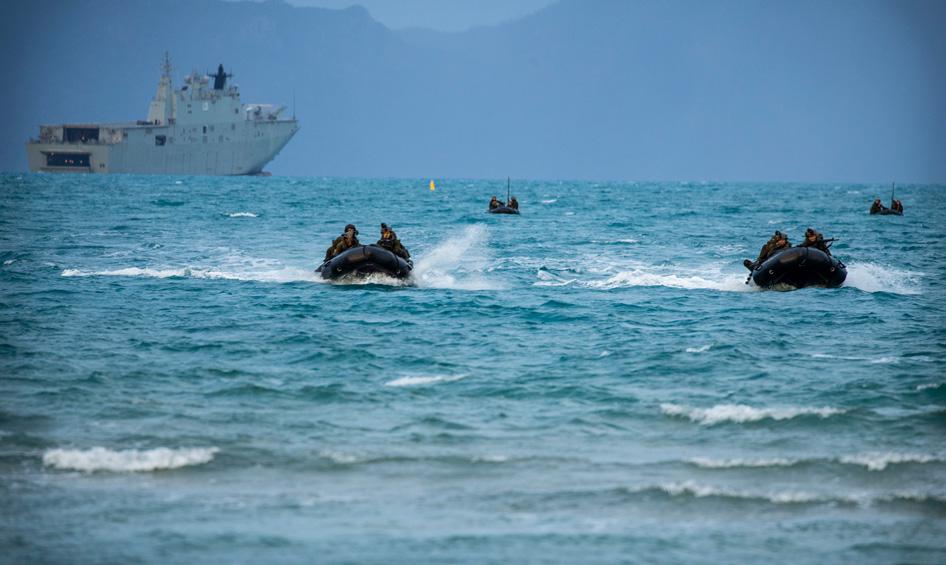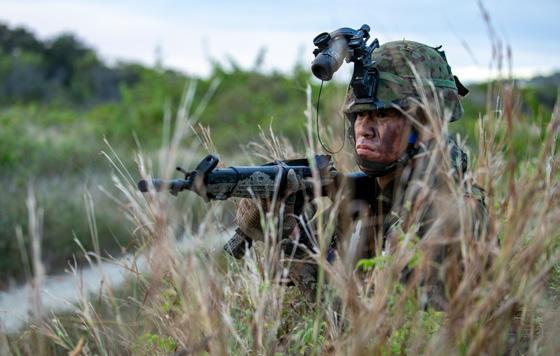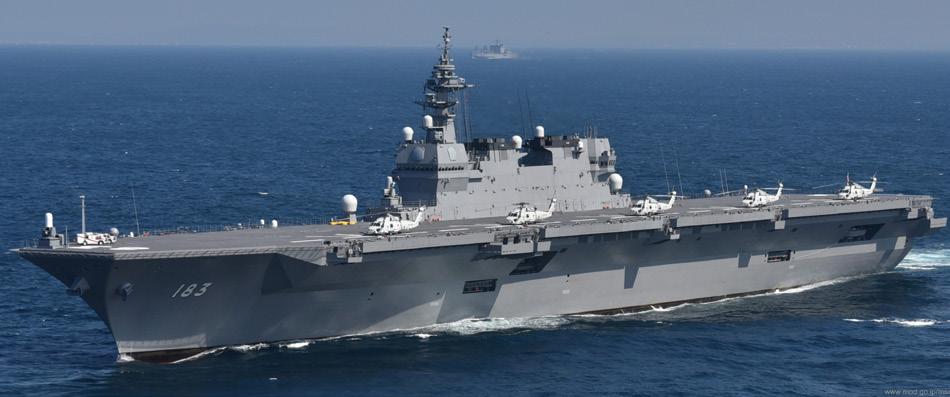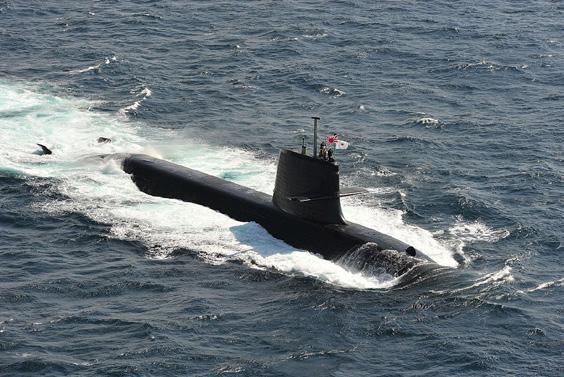
14 minute read
OSINT - JAPAN ORBAT Japan Self Defense Force
from ADBR JUL-AUG 2020
by adbr5
OSINT JAPAN SDF ORBAT
With Australia, Japan, and other nations in the Indo-Pacific region increasingly being drawn together to counter Chinese territorial aspirations, ADBR’s OSINT series of analysing the various regional orders of battle in play continues. In this issue, we look at the Japan Air Self Defense Force.
Advertisement
BY MIKE YEO
For a country that is technically disallowed by its constitution to have a military, Japan’s Self-Defense Force (JSDF) is among the best equipped militaries in the region.
In its English translation, Article 9 of the country’s constitution which was drawn up in the wake of World War II, states, “Aspiring sincerely to an international peace based on justice and order, the Japanese people forever renounce war as a sovereign right of the nation and the threat or use of force as means of settling international disputes. In order to accomplish the aim of the preceding paragraph, land, sea, and air forces, as well as other war potential, will never be maintained. The right of belligerency of the state will not be recognized.” Nevertheless, that part of the constitution has been interpreted by successive Japanese governments that the country was able to build ‘This posture change and maintain an inherent right of self-defence. is driven in part by So, with the security China’s rapid military treaty signed by Japan with the United States modernisation and in 1951 allowing the increasing assertiveness’ latter’s forces stationed in Japan to deal with external aggression against the country, Japanese forces would deal with internal threats and natural disasters. This started out as the National Police Reserve consisting of 75,000 men equipped with light infantry weapons formed in 1950, with a maritime counterpart – the Coastal Safety Force – coming into being two years later. These were renamed as the Japanese Ground Self-Defense Force (JGSDF) and Maritime Self-Defense Force (JMSDF) on July 1 1954, while a third service – the Air Self-Defense Force (JASDF) – was also created on this date.
To keep within its self-defence remit, Japan has taken pains to ensure the JSDF does not have the capability to conduct offensive operations. For example, the JASDF’s soon-to-be-retired licencebuilt Mitsubishi F-4EJ Phantom IIs have all ground attack systems removed, retaining only its air-to-air capability.
The JSDF also currently has no long-range surface or air-to-surface missiles in its inventory, and – for now – the services are expressly forbidden to strike ground targets overseas. But plans to acquire KONGSBERG JSM air-to-surface missiles have only recently been cemented, and a tentative debate around conducting strike operations as part of a response to, for example, ballistic missile launches against Japan, has not been resolved.
A NEW PARADIGM This posture change is driven in part by China’s rapid military modernisation and increasing assertiveness. This includes regular voyages by its coast guard vessels into the contiguous zone around the Japanese-administered Senkaku Islands in the East China Sea of which China is disputing the ownership.
The geopolitical changes have made a push by Japan’s current Prime Minister Shinzo Abe for a more liberal interpretation of the self-defence clauses of the country’s constitution. It is a key plank of his agenda and an easier sell to the Japanese political establishment and public.
The unease about China is made patently clear in the latest iteration of Japan’s annual White Paper. Named Defense of Japan 2020 and released in mid-July, the paper mentions China a total of 56 times, working out to twice as many mentions compared with North Korea, and three times more
(LEFT) An F-15J from the JASDF’s dedicated aggressor unit. The F-15 is currently the nation’s primary interceptor. MIKE YEO
(RIGHT) One of the JASDF’s remaining F-4EJ Phantoms which, along with force’s older F-15Js, are about to be replaced by more than 140 F-35s. MARK JESSOP

than Russia.
The language used to describe China is also evolving. The first of the annual Japanese defence white papers in 2006 described China’s military build-up and increasing assertiveness as a matter for “attention”, with language escalating over time to reference this year as a “grave matter of concern”.
Similarly, North Korea’s nuclear arsenal and ongoing development of its ballistic missile delivery systems ranks it as posing a “grave and imminent” threat to Japan’s security. Against this backdrop Japan’s defence budget has been rising since 2012 after years of reduction, growing to US$65bn (A$90bn) for the current fiscal year, although it is still nowhere near the growth trajectory of its neighbours such as China or South Korea.
CROSS-DOMAIN OPERATIONS In the past few years, Japanese defence planners have focused on multi-domain operations and have put into place effort to develop a force for such operations. Successive white papers have underscored this emphasis, with an eye on defending Japan’s “remote islands”, shorthand for the contested Senkaku Islands which lie between Okinawa and Taiwan.
But joint force operations are still very much a new thing for the SDF, with tentative first steps now being taken in this area. The formation of the JGSDF’s Amphibious Rapid Deployment Brigade (ARDB) in 2018 is one such example, although the unit still lacks suitable training areas inside Japan to conduct amphibious landing and follow-on operations.
As such, the ARDB’s participation in amphibious assault training at Exercise Talisman Sabre 2019 alongside US Marine Corps and ADF amphibious elements while deployed on board JMSDF ships was the first opportunity for the unit to conduct such activities. Indeed, the unit’s leadership expressed appreciation for the ability to use the expansive training areas along Queensland’s coastline to hone their skills.
A similar, smaller-scale unilateral exercise in Japan later that year saw a JASDF Mitsubishi F-2 drop a live GPS-guided bomb on a simulated target, with the fact that the SDF saw fit to publicise the event underscoring how rare and newsworthy it was.
These domains also include space, and Japan has been active in recent years preparing and launching satellites into space for Intelligence, Surveillance, and Reconnaissance (ISR) missions. In May the country inaugurated its own Space Operations Squadron with an initial cadre of 20 personnel. The unit is part of the JJASDF, and its strength is expected to grow to 100 by 2023.
The new unit will be integral to the targeting cycle for hypersonic weapons Japan is developing, which will rely on space-based sensors to provide initial and mid-course target data.

Defence planners are focusing on multi-domain operations which led to the formation of the Amphibious Rapid Deployment Brigade seen here (below and bottom) on assault training during Exercise Talisman Saber in 2019. ADF

ARDB forces (above) are set to be joined by an additional regiment, with plans underway to develop a replacement for the AAV-7 amphibious vehicle (top) currently operated by the unit. MIKE YEO / ADF


GROUND SELF-DEFENCE FORCE The JGSDF is the largest of the three branches, with about 150,000 personnel on its books. As its name suggests, its remit is land operations in the defence of Japan and its outlying islands. The JGSDF is further organised into five separate Army Groups based on geography – the Northern, Northeastern, Eastern, Central, and Western Armies.
Each Army has it subordinate combat divisions and brigades assigned from the JGSDF’s nine active divisions (eight infantry and one armoured), and eight brigades that include the ARDB and one airborne brigade. The divisions and brigades are organised as a combined arms outfit, each having its own infantry, specialist and support sub-units, such as armoured, reconnaissance, engineering, or anti-aircraft vocations assigned, depending on its location and role.
The JGSDF’s armoured spearhead is the Type 10 main battle tank (MBT) which entered service in 2012 and is due to replace the older Type 90 and Type 74 tanks still in service.
Built by Mitsubishi Heavy Industries (MHI), the Type 10 is equipped with an onboard C4I system, a capability that Japan determined could not be retrofitted to its older tanks. It also features a new indigenous 120mm main gun that can fire NATO ammunition, as well as the locally-developed Type 10 Armour Piercing Fin Stabilised Discarding Sabot (APFSDS) round.
At 48-tonnes fully loaded, the Type 10 can be employed throughout Japan, compared to the heavier Type 90 that could only be deployed on Hokkaido, the northernmost of Japan’s three main islands where historically the JGSDF saw as the most likely starting point of a Soviet invasion should the Cold War turn ‘hot’.
Going forward, the JGSDF plans to transform one of its divisions and two of its brigades into rapid deployment brigades furnished with advanced mobility and ISR capabilities. These will see the bulk of the JGSDF’s armoured forces deployed into its Northern and Western Armies, instead of being distributed all over Japan.
It is also likely to see the increased deployment of the rapidly deployable Type 16 manoeuvre combat vehicle (MCV) among its other units, particularly those earmarked for rapid deployment. Also built by MHI, the Type 16 MCV is a 26-tonne armoured 8x8 wheeled vehicle fitted with a 105mm high velocity main gun.
MHI is also touting an armoured personnel carrier (APC based on the Type 16 MCV for a new vehicle to replace the JGSDF’s Type 96 8x8 wheeled APC). The vehicle will be evaluated by Japan’s Acquisitions, Technology, and Logistics Agency (ATLA) alongside the Patria AMV and GDLS LAV 6.0 for selection in 2022.
Improved mobility and portability is also behind Japan’s development of a wheeled self-propelled howitzer (SPH). The country’s licence-built FH70 155mm towed howitzers are being replaced by the newer Type 19. Also built by MHI, the Type 19
features a 52-calibre howitzer mounted on an 8x8 truck chassis, with prototypes seen so far using MAN HX-series trucks.
Japan will acquire seven more Type 19s under its 2020 defence budget, adding to the seven prototypes acquired in 2019. The ongoing reorganisation of the JGSDF will see the new howitzers come under the direct command of the respective Armies in 2023, as opposed to the current assignment of the FH-70s to individual divisions and brigades.
Meanwhile, the ARDB will get an additional regiment under current plans, and Japan is also developing a new tracked amphibious vehicle to replace the AAV-7s currently being operated by the unit.
Japan’s acquisition of 17 Bell-Boeing MV-22B Osprey tiltrotors was done with supporting the ARDB in mind. But only five have been contracted and delivered so far and, of these, only two have been delivered to Japan, with the remaining aircraft remaining in the US for training.
Vocal opposition by the local government and residents over safety concerns about the MV-22 has meant that plans to base them at an airport close to the ARDB’s base at Camp Ainoura in Western Japan have been put on hold. The two aircraft that arrived in Japan in April currently operate temporarily out of Camp Kisarazu southeast of the capital Tokyo, where the JGSDF’s 1st Helicopter Brigade is based.
MARITIME SELF-DEFENCE FORCE The 50,000-strong JMSDF is the SDF’s maritime arm. Equipped with highly-capable Aegis destroyers for air and missile defence, and locally-developed Soryu class diesel-electric attack submarines widely regarded as among the best in the world.
The JMSDF will also soon have its own aircraft carrier for the Short Take Off Vertical Landing

(STOVL) Lockheed Martin F-35B Lightning II. The helicopter destroyer The carrier is being adapted from the helicopter Izumo which is undergoing conversion to carry STOVL destroyer (DDH) Izumo, a 27,000-ton vessel with a F-35Bs. JASDF through-deck design for flight operations. The ship is being converted from carrying only helicopters to enable F-35B operations, drawing its air wing from the 42 F-35Bs that Japan is acquiring.
The fleet is split primarily between four bases: Yokosuka near Tokyo – the JMSDF’s headquarters – Maizuru, Sasebo, and Kure. The JMSDF’s primary surface combatants – known in the JMSDF as escorts – are split into eight escort flotillas of four ships each, with two flotillas at each base.
The bases all have a single replenishment ship (AOE) assigned. ‘Over the past decade Each of the bases, along with Ominato, also have the ratio of Chinese an additional escort military aircraft being squadron belonging to the Naval District intercepted has grown Forces operating older steadily’ destroyers or destroyerescorts.
Apart from Izumo, Japan has three more DDHs, these being a second Izumo class ship and two smaller Hyuga class designs. These are the biggest ships in the JMSDF and, while lightly armed, have utility as anti-submarine platforms with their helicopters for which they were originally designed, or supporting disaster relief operations with transport helicopters.
This leaves the title of the most potent ships in the JMSDF being its Aegis destroyers. Japan currently has seven of these ships split among the Kongo (4), Atago (2) and Maya (1) classes, with another Maya class vessel due to enter the fleet in 2021.
All of these ships are or will be equipped with the equivalent of Aegis Baseline 9 for Integrated Air and Missile Defence (IAMD) and, like the Royal
One of the 11 Soryu class submarines in service with the JMSDF. Plans are underway to expand the current 18-boat submarine fleet to a total of 22. JASDF Australian Navy, will all eventually get Cooperative Engagement Capability (CEC) for improved networking with assets such as the JASDF’s E-2D Airborne Early Warning aircraft, US, and other similarly-equipped allied ISR airborne and surface platforms.
For the anti-air and BMD missions, the ships can employ Raytheon SM-2 and the SM-3 Block I missiles. Raytheon and MHI have also designed the larger SM-3 Block IIA that can intercept intercontinental ballistic missiles, and this is currently in development.
A new class of eight 3,900-ton 30FFM multirole frigates is also being built to replace some of the older destroyer classes. These will have improved multi-role capability such as mine countermeasures, and will eventually bring the total number of combatants in the JMSDF to 54.
Kure and Yokosuka are the home ports of the JMSDF’s impressive submarine fleet. Split into two flotillas with three squadrons each, the 18 boats will grow to 22 in the coming years as Japan continues to build up its undersea capabilities. This will be centred around a dozen Soryu class boats, 11 of which are now in service. The 11th boat made history as the first operational submarine fitted with lithiumion batteries when it commissioned into the JMSDF in March 2020.
The last boat in the Soryu class will also utilise lithium-ion batteries, along with the followon submarine class Japan is already planning. Currently known only as the 29SS class, these are an evolution of the Soryu boats, with reports claiming that these will utilise pump-jets instead of a conventional screw.
AIR SELF-DEFENSE FORCE The 50,000-strong JASDF is responsible for the air defence of Japanese mainland and outlying islands.
Indeed, China’s rising military assertiveness has meant that the JASDF air combat force has been

kept busy in recent years. Japan maintains an expansive Air Defense Identification Zone (ADIZ) around its territory, and its interceptors are regularly tasked with identifying and monitoring foreign military aircraft that enter it.
Over the past decade, the ratio of Chinese military aircraft being intercepted has grown steadily, with Japan’s Defense Ministry revealing that 675 out 947 intercepts in the last fiscal year were against China, most of these taking place over the East China Sea.
In response, Japan has already relocated one of its Mitsubishi F-15J Eagle squadrons to the southern island of Okinawa, along with a detachment of Northrop Grumman E-2C Hawkeye airborne early warning (AEW&C) aircraft.
The F-15J remains the JASDF’s primary interceptor. Japan built some 200 F-15s under licence in the 1980s, these being currently operated by seven different operational squadrons, plus a training squadron and a dedicated aggressor unit.
At least 98 of these will be upgraded in the coming years to F-15JSI standard with a new Active Electronically Scanned Array (AESA) radar, mission computer, improved electronic warfare (EW) and other systems akin to the USAF’s new F-15EX.
Japan will also be the biggest non-US operator of the Lockheed Martin F-35, with plans to eventually acquire 105 Conventional Take Off and Landing (CTOL) F-35As and 42 STOVL F-35Bs. These will replace the last Mitsubishi F-4EJ Phantom IIs and some of the older F-15Js in JASDF service, with one of the squadrons operating the F-4 already in the process of transitioning.
A new fighter is also being developed to replace 87 Mitsubishi F-2A/B multirole fighters currently serving with three operational and one training squadron. Japan is keen to restart its own fighter production line, which ended when deliveries of the F-16-based F-2 were completed in 2011, as it could only secure final assembly and check out (FACO) rights for the F-35.
During the intervening years, Japan continued research into technology such as AESA radars, engines, and stealth shaping and coatings, with MHI building a technology demonstrator aircraft for ATLA which undertook almost 40 test flights between 2016 and 2018.
The data from these flights has allowed Japan to continue its R&D into fighter technology, and it will develop the F-X to replace the F-2 as an indigenous program, although it will still seek foreign partners to assist as required. The prime contractor will be selected by early 2021.
Japan has also investing in force-multipliers, with the recent acquisition of the newer AESA-equipped Northrop Grumman E-2D to complement its older E-2Cs and E-767s, and is soon to receive the first of at least four KC-46 Pegasus tankers to replace its four KC-767s.








